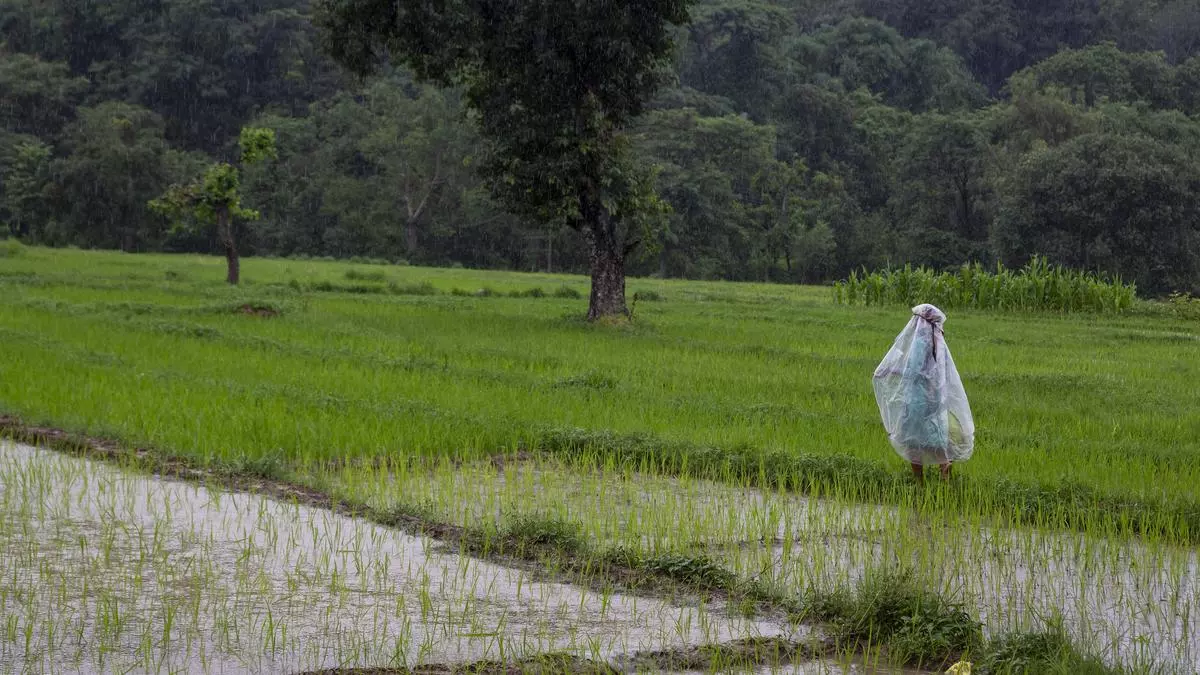Budget touches most nerve centres of agriculture
If we were to frame a wish list of the most important tasks to accomplish or the “nerve centres’’ in agriculture, Finance Minister Nirmala Sitharaman has touched upon 5 such nerves;
(1) National Cooperation Policy
(2) Digitalisation of land records
(3) Release of climate resilient and high-yielding variety (HYV) seeds
(4) Promoting Vegetable Clusters including post-harvest management infrastructure
(5) “Atmanirbharta” in Oilseeds including Soybean.
We fear that some of these may get lost in details and/or in execution, like many do each year, but credit must go to her (and possibly to the new Union Agri and Rural Development Minister) rightfully for forcefully bringing them to attention.
That the biggest travail of Indian agriculture being fragmentation in farmland is not a new story. How come then, successive Governments (also in the States) have so conveniently not tackled this issue with alacrity? Clearly, it is neither the farmers nor the consumers who benefit from low productivity and inconsistent quality.
World over, especially in democracies where forced consolidation of land is not possible, the best way is to promote Cooperatives.
The present legislation around Cooperatives is a challenge but it is unfathomable why Union and State Governments could not join forces for the betterment of millions of farmers (and consumers) by legislating the necessary amendments instead of using farmers as a debating subject. It is now upto the lawmakers to make Cooperatives a living reality.
Should have been done earlier
The records of rural/farm land are often lack veracity of title. Informal dwellings, successive divisions, illiteracy, unawareness and complicity of village level administration has prevented availability of such papers. This prevents formal lending to these hapless owners leading to the informal lenders making merry.
Once again, this is neither new nor insolvable but should not have taken 70 years for attention. FM’s including the issue and offering to hasten digitalisation and check sub-division is very welcome. There are NGOs and organisations which can assist the Governments to fast track this task as seen in some progressive pockets.
The issue of decreasing arable land and productivity, exacerbated by climate change, are massive challenge. There is stress on food production globally. If we cannot accept genetically modified organisms, the only option is to develop and commercialise high-yielding, climate-resilient varieties.
Not sure why these 109 odd HYVs for 32 crops were kept safe all these years since the problems of soil erosion and shortages stared at us for a long while it takes at least a season or two for any new variety to be marketed and yield results. It is time to give a major fillip to R&D by the private sector with the agri Universities having an oversight rather than them solely developing and restricting release of the new varieties.
Kudos again to the Finance Minister (and the Union Agri Minister who probably propelled this) for conceptualising vegetable “Clusters” focusing on the downstream chain of storage and distribution.
We are the 2nd largest producer of vegetables in the world with over 200 million tonnes per annum of production but have no place in the merit list of producers since a huge amount (~40 per cent) is lost in value and exports are but a fraction.
Clusters will ensure better or consistent quality, encourage cluster level storage, primary processing and distribution due to scale efficiencies. Hopefully, the concept will get translated by the “new look” agri Ministry into practical and feasible rules encouraging private sector to come in whilst the Governments look-in for malpractices but not impound (fair) market practices.
Atmanirbhar in edible oils
It is difficult to rationalise an import bill of ~₹1.5 lakh crore for ~160-170 lakh tonnes of edible oils. A significant part (38 lakh tonnes) is soyabean oil while 35-40 per cent capacities of 130-odd soya crushing plants are idle for want soyabean seeds.
A Technology Mission on Oilseeds is in existence since 1986 but we are still short. Why are farmers hesitant to grow these seeds if there is an increasing demand?
If due to price parity issues for DOC with the US, Argentina or Brazil, there can be an incentive for the animal feed industry to consume Indian DOC. mustard and sunflower seed and oil production can also be increased substantially even if there were to be a rejigged MSP (and VGF for producers) for farmers for a limited period until the market takes over.
India has to urgently find a substitute for imported palm oil and not take the easy way out by reducing the import duty from 17.5 per cent to 12.5 per cent. A new era of protectionism is in the face around the world which stares at global food shortage. Atmanirbharta in edible oils has to be a cherished and time-bound goal. We should not be compelled to espouse GMO to survive.
It is well understood that there could be political compulsions of this Government. Yet, it is the right time for the Government to invite all States and parties to join hands on the agri-related issues, which directly impact the future of our farmers and not oppose for the sake of opposing.
Indian voters are conscientious enough to vote for constructive criticism rather than political optics. Bottom line – Agriculture has to contribute a minimum of 25 per cent to the GDP by 2030 and 30 per cent by 2040 for India to achieve its 2047 target of “Viksit Bharat”. If all hands are on deck, it is achievable; not otherwise.
(The authors are respectively Chairman and MD & CEO of Prowess Advisors)
